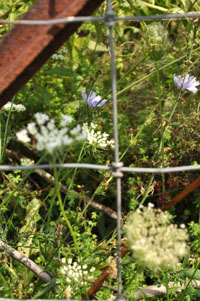Posted by · Leave a Comment
Tracy and Dave continue the conversation about managing pasture land and show what a few weeks growth in a healthy pasture looks like.
Posted by · Leave a Comment
Tracy and Dave continue the conversation about managing pasture land and show what a few weeks growth in a healthy pasture looks like.
Posted by · Leave a Comment
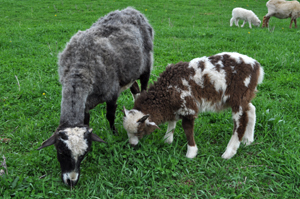 Pasture management is a system by which farmers and ranchers manage their acreage in order to gain the best possible yield for their animals with as little stress on the land as possible.
Pasture management is a system by which farmers and ranchers manage their acreage in order to gain the best possible yield for their animals with as little stress on the land as possible.
Regular “pasture walks” accomplish a great deal and allow the farmer to recognize the rate of consumption of the grasses and plants as well as address any problems that arise.
A conscientious farmer will also pay attention to the amount of manure collecting on the pasture.
Positive management practices will impede erosion and preclude runoff reaching streams and waterways. (This is especially important if you live near an environmentally fragile area like a riparian buffer, for instance.)
Rotational grazing will allow sufficient re-growth and minimize damage from animal “tramping” as well.
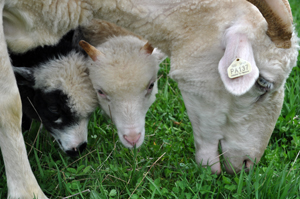 Pasture management is a year-round responsibility.
Pasture management is a year-round responsibility.
Remember to soil-test your pasture. See if there’s anything to “feed” it so that it may, in turn, provide feed for your livestock.
The local cooperative extension in your area is, as always, a great resource!
Posted by · Leave a Comment
Tracy and Dave discuss a comprehensive approach to managing pasture land and promoting optimal health among the flocks. Witnessing the release of the animals to pasture near the end of the program will delight the child in all of us.
Posted by · Leave a Comment
Take a walk in tall grasses this time of year and you’ll likely pick up all sorts of hitchhikers (yes, we called them “hitchhikers” as kids) As a mom, I tend to find these indoors more than out: on socks, coveralls, the dryer lint screen, bath towels.
The typical varieties around here are Agrimony and Tall Beggar’s Ticks.
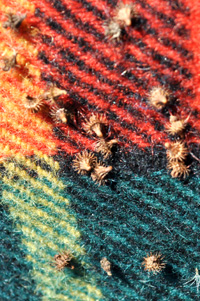
Agrimony Seeds
Agrimony’s aliases should clue us in: “Cockeburr,” “Sticklewort,” “Philanthropos” (maybe because it gives freely of its seeds?). It’s a lovely native plant—with tall, showy spikes in the late summer. The seeds rely on passersby (human and/or animal) to pick up and unknowingly deposit them elsewhere.
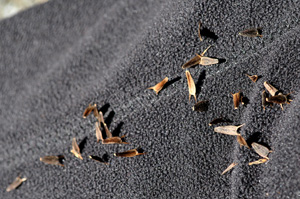
Tall Beggar's Ticks
Tall Beggar’s Ticks have unique prongs which grab at any soft material—a shirt, dog hair, etc. Nathaniel, my son, upon seeing the collection on my pants promptly said, “Mom, pull those out gently because if the spikes break in the material, it’ll bother you for days!” I agreed. Just one plant can yield hundreds of prickly-pronged seeds.
In 1941, a Swiss engineer returned from a walk with his dog and found burdock seeds lodged in the animal’s fur. After careful microscopic scrutiny, he became fascinated by the “hook and loop construction” that he saw. Do you know what he invented?
Velcro.
Posted by · 1 Comment
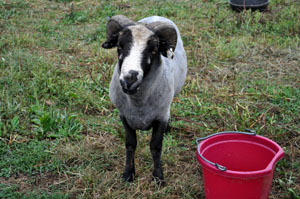 Baw Blue, our devilishly handsome Navajo-Churro ram will return to his home farm in a few days. We heeded his owner’s warning and gave him full and free access to the girls. (Translation: we did not venture into the pasture while he was here except for feeding and watering. Blue’s known to be quite territorial when it comes to his “girlfriends.”)
Baw Blue, our devilishly handsome Navajo-Churro ram will return to his home farm in a few days. We heeded his owner’s warning and gave him full and free access to the girls. (Translation: we did not venture into the pasture while he was here except for feeding and watering. Blue’s known to be quite territorial when it comes to his “girlfriends.”)
I’ve missed my ewes! Reese will hear my voice from across the yard and call out – at least, I’m thinking she’s calling out to me. She’s probably just making her random matriarchal “baaa-aa.” Yesterday morning, however, I left the pasture after changing out the water buckets and when I was back at the spigot, I heard her trademark “baaa.” I was shocked to see her standing at the open gate that I had forgotten to latch! Everyone else was too busy chomping at the hay I’d left in the rack to notice the gateway but there she was just standing and alerting me of something “different.”
So, Blue will make his return journey this weekend having spread his maleness (we hope) amongst 11 ewes and we’ll go back to coddling our sheep. It was nice having him around these last few weeks. He added a certain “something” to the landscape.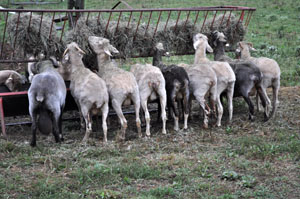
Posted by · Leave a Comment
If there’s one common element that links all of the folks I’ve met on the series, it’s passion. And Mark Lopez is a prime example.
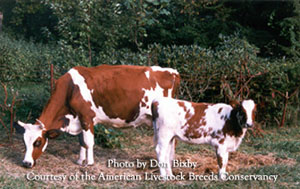
The number of registered Ayrshires in North America has declined significantly over the past 30 years. See the ALBC website for more. www.albc-usa.org/
Mark is a husband, father, veterinarian, and dairy farmer—but not just any dairy farmer. He harvests raw milk from his heritage breed Ayrshire dairy cows. His time, energy, years of education, and love for his herd come to focus upon ensuring the quality of his dairy products. The herd grazes naturally on grass and enters the barn for milking twice a day, every day. Each individual in the herd is known by her name and sweet, subtle quirks.
Mark’s passion is not only for his beloved Ayrshire but also for the dairy operation itself. Harvesting and public sale of raw milk require the maintenance of strict standards in the collection process as well as throughout the collection areas.
Wholesome Dairy Farms is a special place; I’m glad it’s part of the ag community in this valley.
Posted by · Leave a Comment
Our host, Tracy Toth, completes our tour of a riparian buffer while demonstrating how native plant species can support a healthy ecosystem.
Posted by · Leave a Comment
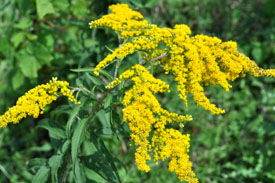
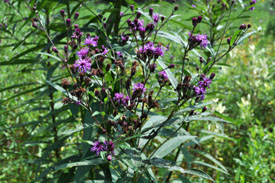
The third summer we were here I noticed cars slowing and occasionally stopping on the road nearer the pasture. I thought, for the longest time, they were looking at our animals.
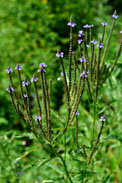
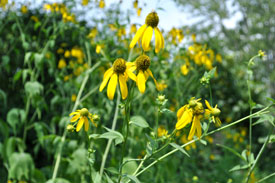
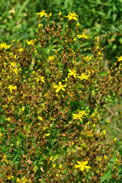
One day, while I was out back noticing the tremendous number of butterflies, it dawned on me. The cars were slowing to take in the activity on the wildflowers—all the pollinators that had found their way to the native species we had let “come back.”
I hope this webisode, in particular, serves as a simple lesson in conservation: that something so easy as letting native species propagate a waterway buffer can naturally accomplish so many vital “tasks” that are necessary for a healthy ecosystem. That, and you get to enjoy one heck of a butterfly show!
Posted by · 1 Comment
Our host, Tracy Toth, demonstrates how providing an opportunity for native plant species to propagate a waterway buffer can naturally accomplish so many vital “tasks” that are necessary for a healthy ecosystem.
Posted by · Leave a Comment
We all have them, to varying degrees. It can be a smell or a sight that conjures up one’s earliest memories. For me, the blooms of chicory and Queen Anne’s lace call up memories of stone bruises, calloused bare feet, scabby knees, popsicle-stained t-shirts, a cane pole, rusty fishhooks, and can of worms.
We had a lake behind our house when I was growing up. It was called a “lake” but to see it now, it’s more like a pond. I spent endless afternoons catching bluegill and the occasional bass out of that lake but had to make my way through a small meadow to get to it.
The stiff chicory always withstood my direct steps and there was nothing else in that whole open “bouquet” that matched that periwinkle blue color. 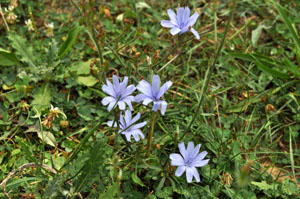 I used to bring mom big handfuls of Queen Anne’s lace which she displayed proudly despite her terrible pollen allergy.
I used to bring mom big handfuls of Queen Anne’s lace which she displayed proudly despite her terrible pollen allergy.
I see the flowers blooming now, in early August, on the sides of roads and in our meadow. Too many people call them “weeds.” Let me just grab my cane pole. I’ll meet you at the lake. 